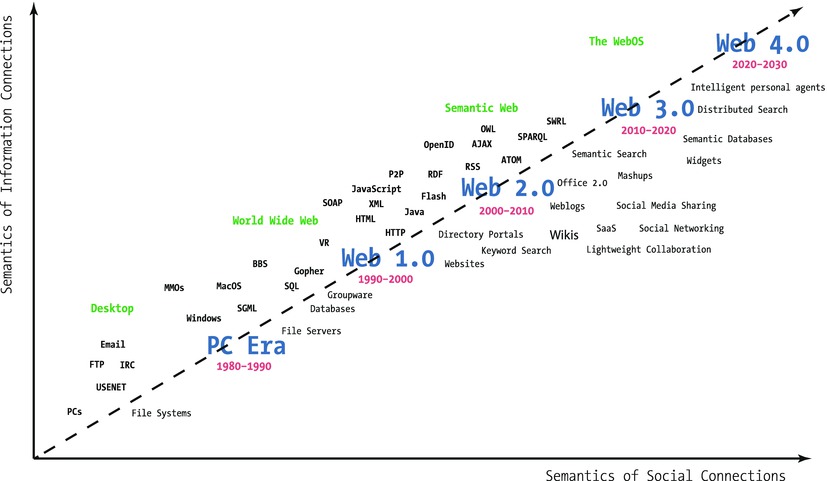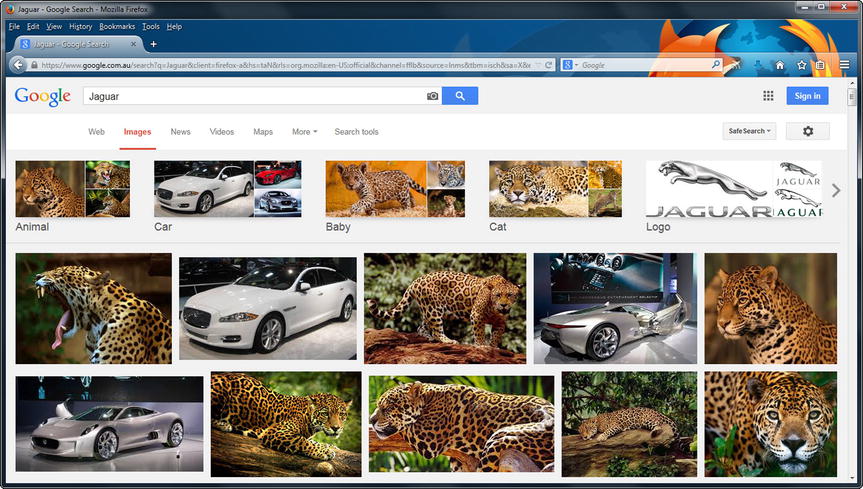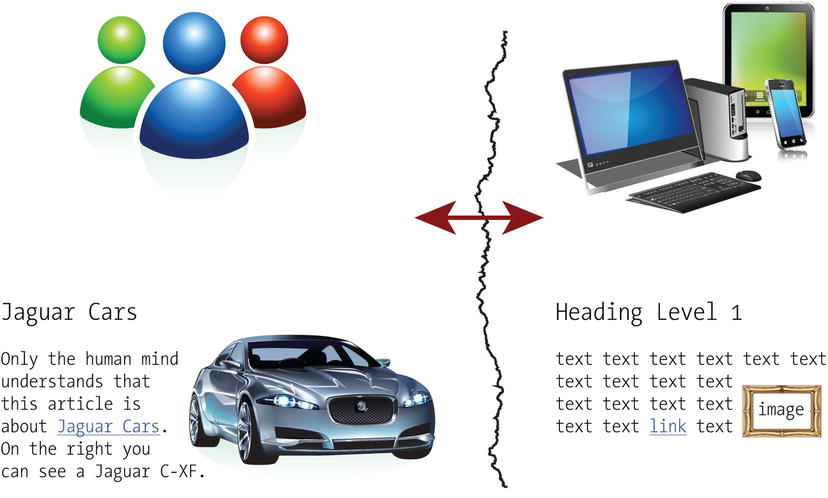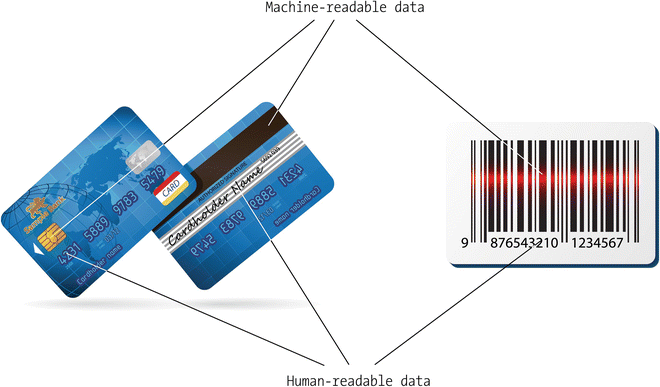Caution
The word semantic is used on the Web in other contexts as well. For example, in HTML5 there are semantic (in other words, meaningful) structuring elements, but this expression refers to the meaning of elements. In this context, the word semantic contrasts the meaning of elements, such as that of section (a thematic grouping), with the generic elements of older HTML versions, such as the meaningless div . The semantics of markup elements should not be confused with the semantics (in other words, machine-processability) of metadata annotations and web ontologies used on the Semantic Web. The latter can provide far more sophisticated data than the meaning of a markup element.
In contrast to the conventional Web (the Web of documents), the Semantic Web includes the Web of Data [6], which connects things (representing real-world humans and objects) rather than documents meaningless to computers. The machine-readable datasets of the Semantic Web are used in a variety of web services [7], such as search engines, data integration, resource discovery and classification, cataloging, intelligent software agents, content rating, and intellectual property right descriptions [8], museum portals [9], community sites [10], podcasting [11], Big Data processing [12], business process modeling [13], and medical research. On the Semantic Web, data can be retrieved from seemingly unrelated fields automatically, in order to combine them, find relations, and make discoveries [14].
Structured Data
Conventional web sites rely on markup languages for document structure, style sheets for appearance, and scripts for behavior, but the content is human-readable only. When searching for Jaguar on the Web, for example, traditional search engine algorithms cannot always tell the difference between the British luxury car and the South American predator (Figure ).
Figure 1-2.
Traditional web search algorithms rely heavily on context and file names
A typical web page contains structuring elements, formatted text, and some even multimedia objects. By default, the headings, texts, links, and other web site components created by the web designer are meaningless to computers. While browsers can display web documents based on the markup, only the human mind can interpret the meaning of information, so there is a huge gap between what computers and humans understand (see Figure elements), the data is not structured or linked to related data, and human-readable words of conventional web page paragraphs are not associated with any particular software syntax or structure. Without context, the information provided by web sites can be ambiguous to search engines.
Figure 1-3.
Traditional web site contents are meaningless to computers
The concept of machine-readable data is not new, and it is not limited to the Web. Think of the credit cards or barcodes, both of which contain human-readable and machine-readable data (Figure ). One person or product, however, has more than one identifier, which can cause ambiguity.
Figure 1-4.
Human-readable and machine-readable data
Even the well-formed XML documents, which follow rigorous syntax rules, have serious limitations when it comes to machine-processability. For instance, if an XML entity is defined between and , what does SLR stand for? It can refer to a single-lens reflex camera, a self-loading rifle, a service-level report, system-level requirements, the Sri Lankan rupee, and so on.
Contents can be made machine-processable and unambiguous by adding organized (structured) data to the web sites, as markup annotations or as dedicated external metadata files, and linking them to other, related structured datasets. Among other benefits, structured data files support a much wider range of tasks than conventional web sites and are far more efficient to process. Structured data formats have been used for decades in computing, especially in Access and SQL relational databases, where queries can be performed to retrieve information efficiently. Because there are standards for direct mapping of relational databases to core Semantic Web technologies, databases that were publicly unavailable can now be shared on the Semantic Web [15]. Commercial database software packages powered by Semantic Web standards are also available on the market (5Store, AllegroGraph, BigData, Oracle, OWLIM, Talis Platform, Virtuoso, and so on) [16].
In contrast to relational databases, most data on the Web is stored in (X)HTML documents that contain unstructured data to be rendered in web browsers as formatted text, images, and multimedia objects. Publishing unstructured data works satisfactorily for general purposes; however, a large amount of data stored in, or associated with, traditional web documents cannot be processed this way. The data used to describe social connections between people is a good example, which should include the relationship type and multiple relationship directions inexpressible with the hyperlinks of the conventional Web [17].
The real benefit of semantic annotations is that humans can browse the conventional web documents, while Semantic Web crawlers can process the machine-readable annotations to classify data entities, discover logical links between entities, build indices, and create navigation and search pages.


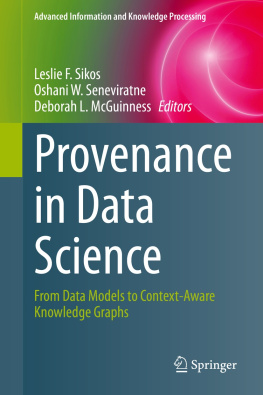


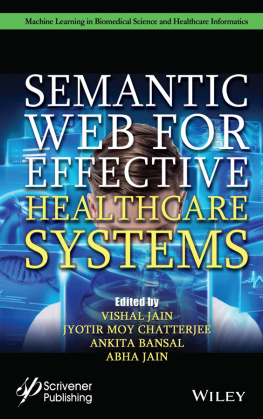
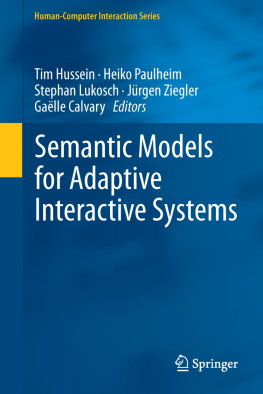


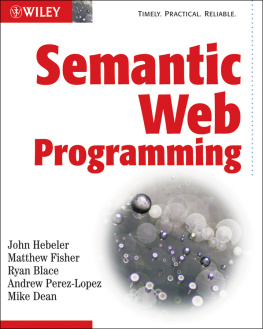
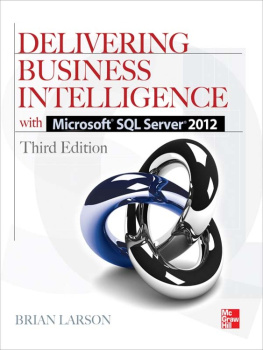
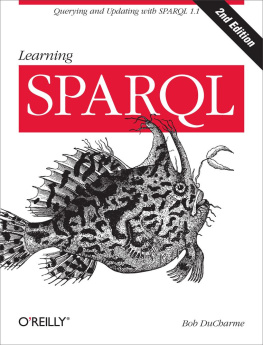
 .
. 